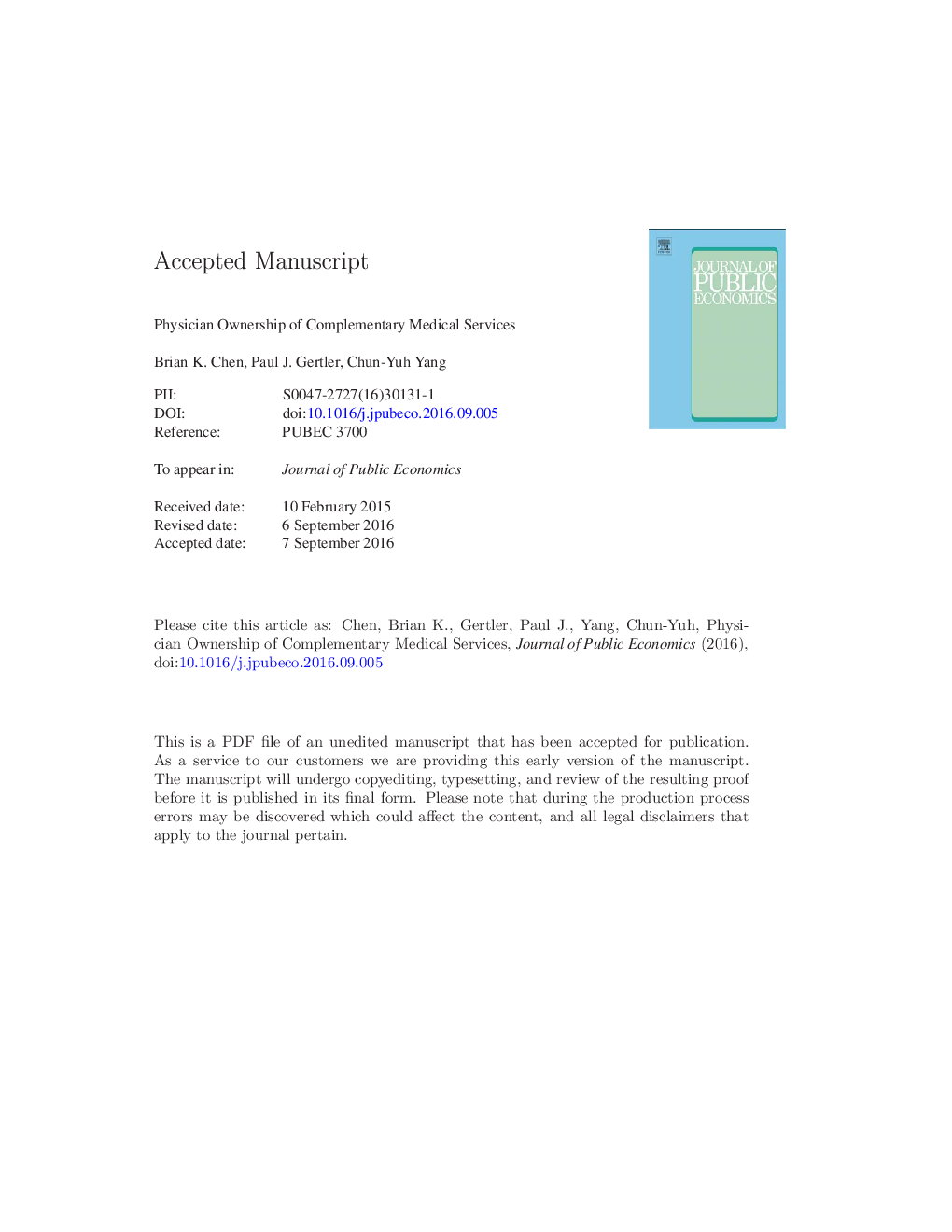| Article ID | Journal | Published Year | Pages | File Type |
|---|---|---|---|---|
| 5101880 | Journal of Public Economics | 2016 | 41 Pages |
Abstract
When physicians own complementary medical service facilities such as laboratories and imaging centers, they gain financially by referring patients to these entities. This creates an incentive for the physician to exploit patients' trust by recommending more services than necessary. Using data from Taiwan, which introduced a “separating” policy, that restricts physician ownership of pharmacies, we estimate that where the policy was binding, eliminating this incentive caused physicians to prescribe 7.1% less in drugs. Taking into account increases in complementary diagnostic services and that drugs are only a part of overall primary care spending, the policy reduced total expenditures by 1.8%. However, a large number of clinics exploited a loophole in the law and either had at baseline or integrated pharmacies into their practices post-policy making them exempt from the policy. As a result, the policy only reduced total drug expenditures by 2.1% and total primary care cost by 0.5%.
Related Topics
Social Sciences and Humanities
Economics, Econometrics and Finance
Economics and Econometrics
Authors
Brian K. Chen, Paul J. Gertler, Chun-Yuh Yang,
